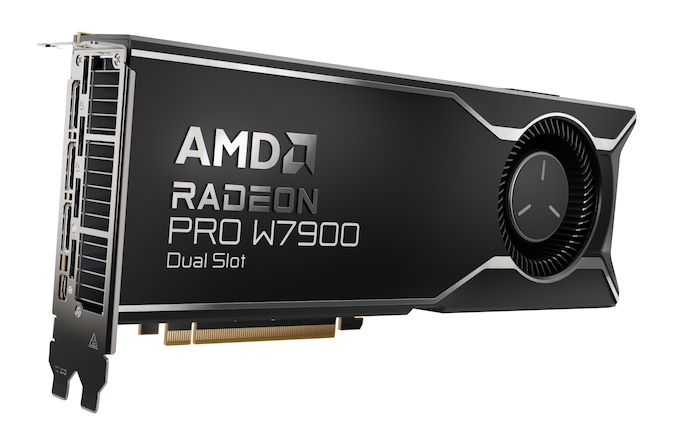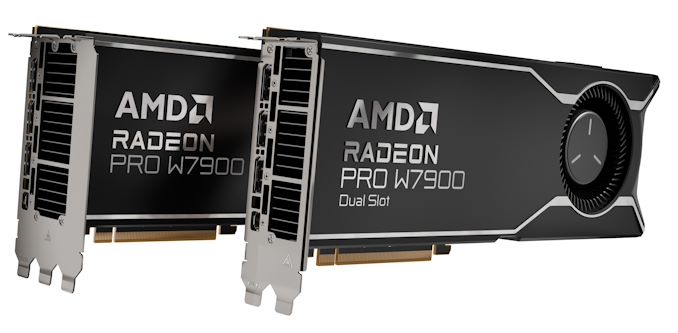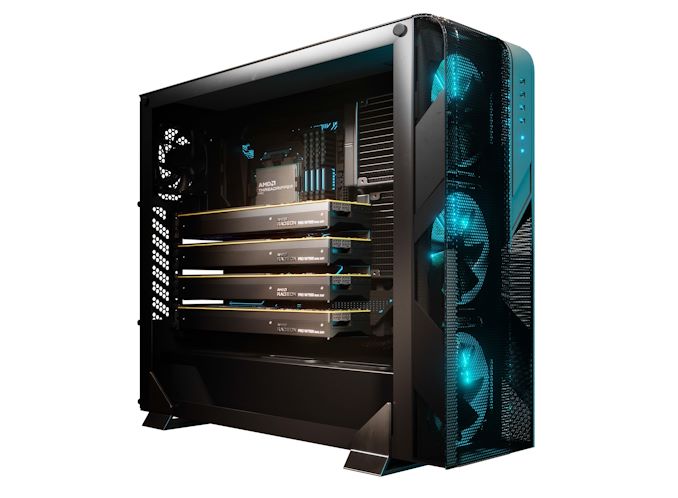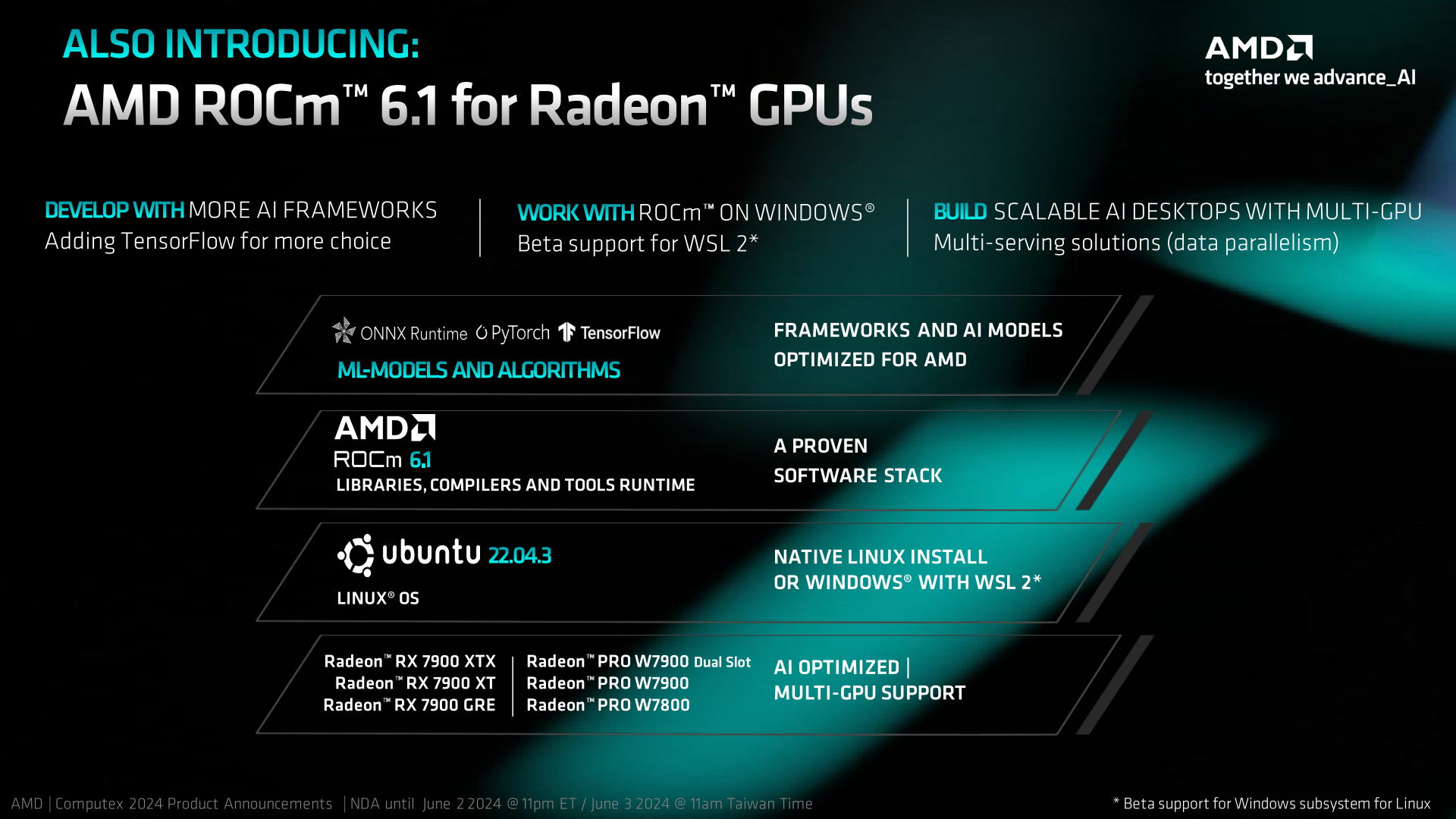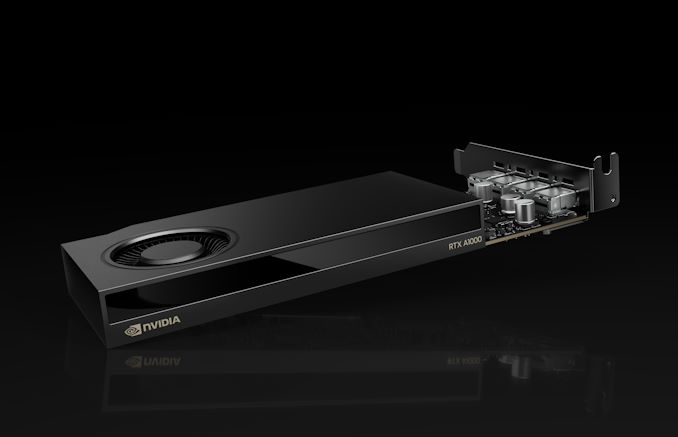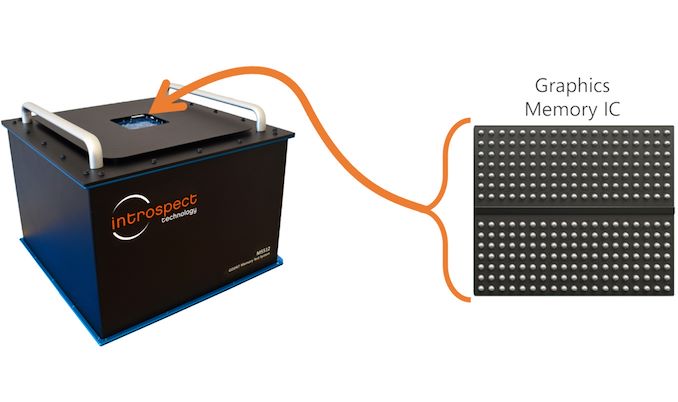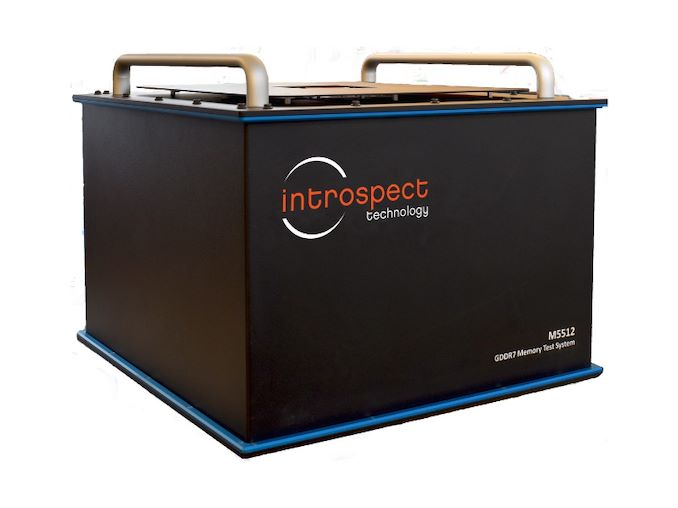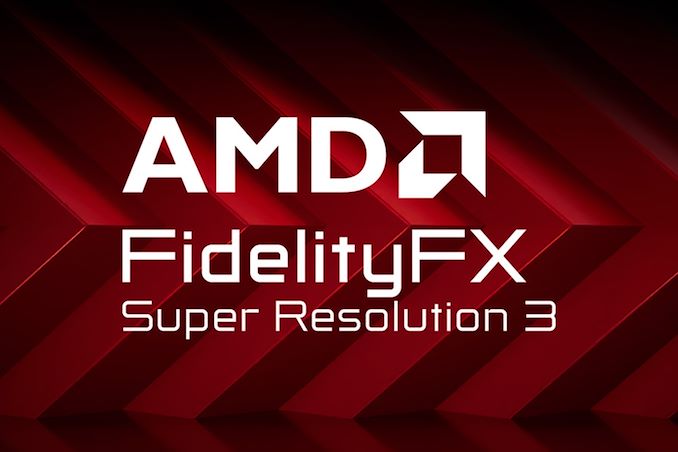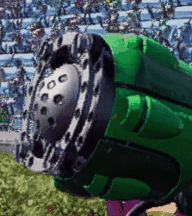AMD Slims Down Compute With Radeon Pro W7900 Dual Slot For AI Inference
While the bulk of AMD’s Computex presentation was on CPUs and their Instinct lineup of dedicated AI accelerators, the company also has a small product refresh for the professional graphics and workstation AI crowd. AMD is releasing a dual-slot version of their high-end Radeon Pro W7900 card – aptly named the W7900 Dual Slot – with the intent being to improve compute density in workstations by making it possible to install 4 of the cards inside a single chassis.
The release of a dual-slot version of the card comes after the original Radeon Pro W7900 was the first time AMD went with a larger, triple-slot form factor for their flagship workstation card. With the W7000 generation bringing an all-around increase in power consumption, pushing the W7900 to 295 Watts, AMD originally opted to release a larger card for improved acoustics. However this came at the cost of compute density, as most systems could only fit 2 of the thicker cards. As a result, AMD is opting to release a dual-slot version of the hardware as well, to offer a more competitive product for high-density workstation systems – particularly those doing local AI inference.
| AMD Radeon Pro Specification Comparison | ||||||
| AMD Radeon Pro W7900DS | AMD Radeon Pro W7900 | AMD Radeon Pro W7800 | AMD Radeon Pro W6800 | |||
| ALUs | 12288 (96 CUs) |
8960 (70 CUs) |
3840 (60 CUs) |
|||
| ROPs | 192 | 128 | 96 | |||
| Boost Clock | 2.495GHz | 2.495GHz | 2.32HHz | |||
| Peak Throughput (FP32) | 61.3 TFLOPS | 45.2 TFLOPS | 17.8 TFLOPS | |||
| Memory Clock | 18 Gbps GDDR6 | 18 Gbps GDDR6 | 16 Gbps GDDR6 | |||
| Memory Bus Width | 384-bit | 256-bit | 256-bit | |||
| Memiry Bandwidth | 864GB/sec | 576GB/sec | 512GB/sec | |||
| VRAM | 48GB | 32GB | 32GB | |||
| ECC | Yes (DRAM) |
Yes (DRAM) |
Yes (DRAM) |
|||
| Infinity Cache | 96MB | 64MB | 128MB | |||
| Total Board Power | 295W | 260W | 250W | |||
| Manufacturing Process | GCD: TSMC 5nm MCD: TSMC 6nm |
GCD: TSMC 5nm MCD: TSMC 6nm |
TSMC 7nm | |||
| Architecture | RDNA3 | RDNA3 | RDNA2 | |||
| GPU | Navi 31 | Navi 31 | Navi 21 | |||
| Form Factor | Dual Slot Blower | Triple Slot Blower | Dual Slot Blower | Dual Slot Blower | ||
| Launch Date | 06/2024 | Q2'2023 | Q2'2023 | 06/2021 | ||
| Launch Price (MSRP) | $3499 | $3999 | $2499 | $2249 | ||
Other than the narrower cooler, the Radeon Pro W7900DS is for all intents and purposes identical to the original W7900, with the same Navi 31 GPU being driven to the same clockspeeds, and the overall board being run to the same 295 Total Board Power (TBP) limit. This is paired with the same 18Gbps GDDR6 as before, giving the card 48GB of VRAM.
Officially, AMD doesn’t have a noise specification for these cards. But you can expect that the W7900DS will be louder than its triple-slot senior. By all appearances, AMD is just using the cooler from the W7800, which was a dual-slot card from the start, so that cooler is being tasked with handling another 35W of heat dissipation.
As the W7800 was also AMD’s fastest dual-slot card up until now, it’s an apt point of comparison for compute density. With its full-fat Navi 31 GPU, the W7900DS will offer about 36% more compute/pixel throughput than its sibling/predecessor. So it’s a not-insubstantial improvement for the very specific niche AMD has in mind for the card.
And like so many other things being announced at Computex this year, that niche is AI. While AMD offers PCIe versions of their Instinct MI210 accelerators, those cards are geared at servers, with fully-passive coolers to match. So workstation-level compute is largely picked up by AMD’s Radeon Pro workstation cards, which are intended to go into a traditional PC chassis and use active cooling (blowers). In this case, AMD is specifically going after local inference workloads, as that’s what the Radeon hardware and its significant VRAM pool are best suited for.
The Radeon Pro W7900 Dual Slot will drop on June 19th. Notably, AMD is introducing the card at a slightly lower price tag than they launched the original W7900 at last year, with the W7900DS hitting retail shelves at $3499, down from the W7900’s original $3999 price tag.
ROCm 6.1 For Radeons Coming as Well
Alongside the release of the W7900DS, AMD is also promoting the upcoming Radeon release of ROCm 6.1, their software stack for GPU computing. While baseline ROCm 6.1 was introduced back in April, the Windows version of AMD’s software stack is still a trailing (and feature limited) release. So that is slated to finally get bumped up to a ROCm 6.1 release on June 19th, the same day the W7900DS launches.
ROCm 6.1 for Radeons is slated to bring a couple of major changes/improvements to the stack, particularly when it comes to expanding the scope of available features. Notably, AMD will finally be shipping Windows Subsystem for Linux 2 (WSL2) support, albeit at a beta level, allowing Windows users to access the much richer feature set and software ecosystem of ROCm under Linux. This release will also incorporate improved support for multi-GPU configurations, perfect timing for the launch of the Radeon Pro W7900DS.
Finally, ROCm 6.1 sees TensorFlow integrated into the ROCm software stack as a first-class citizen. While this matter involves more complexities than can be summarized in a simple news story, native TensorFlow support under Windows was previously blocked by a lack of a Windows version of AMD’s MIOpen machine learning library. Combined with WSL2 support, developers will have two ways to access TensorFlow on Windows systems going forward.
